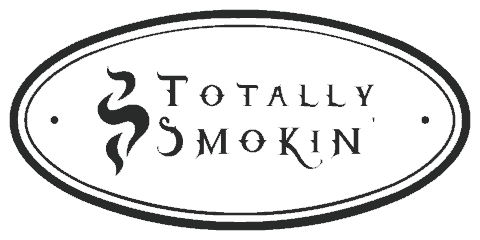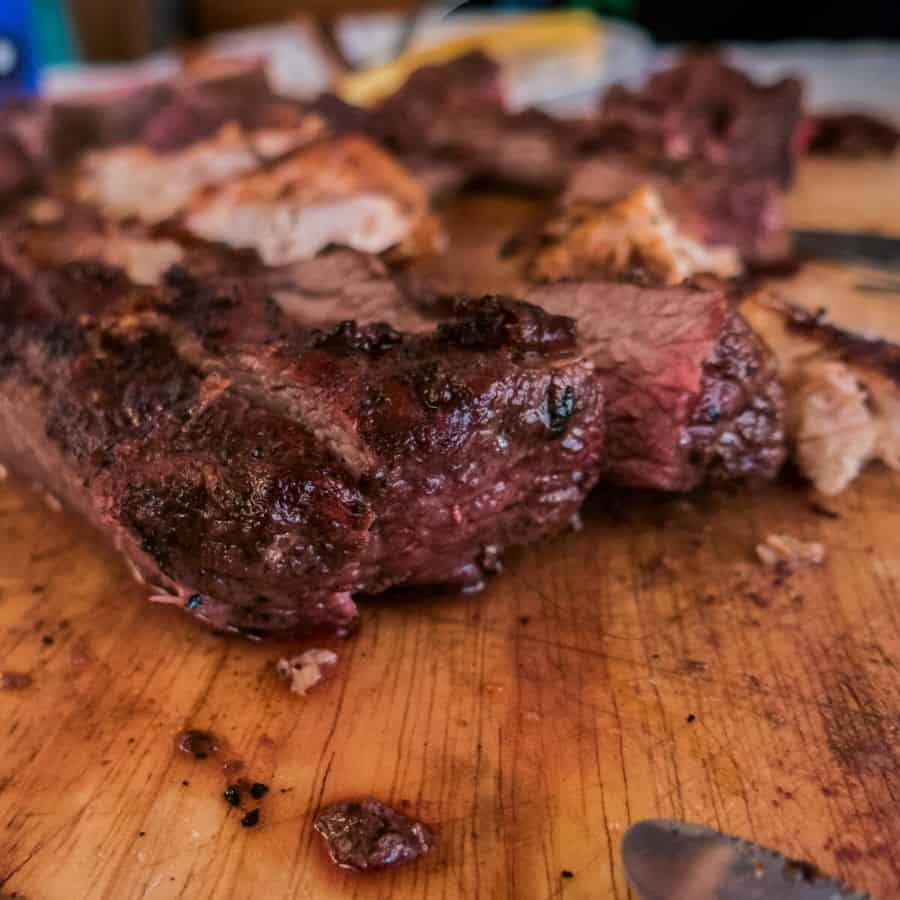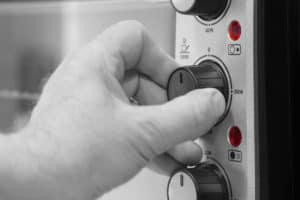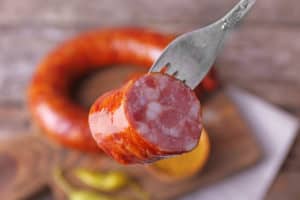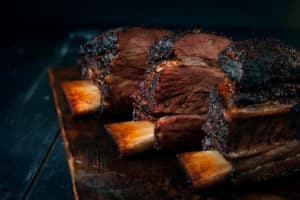Cold Smoking Sausage for Newbies
Disclosure: This post may contain affiliate links. If you use these links to buy something we may earn a commission at not additional cost to you. Learn more.
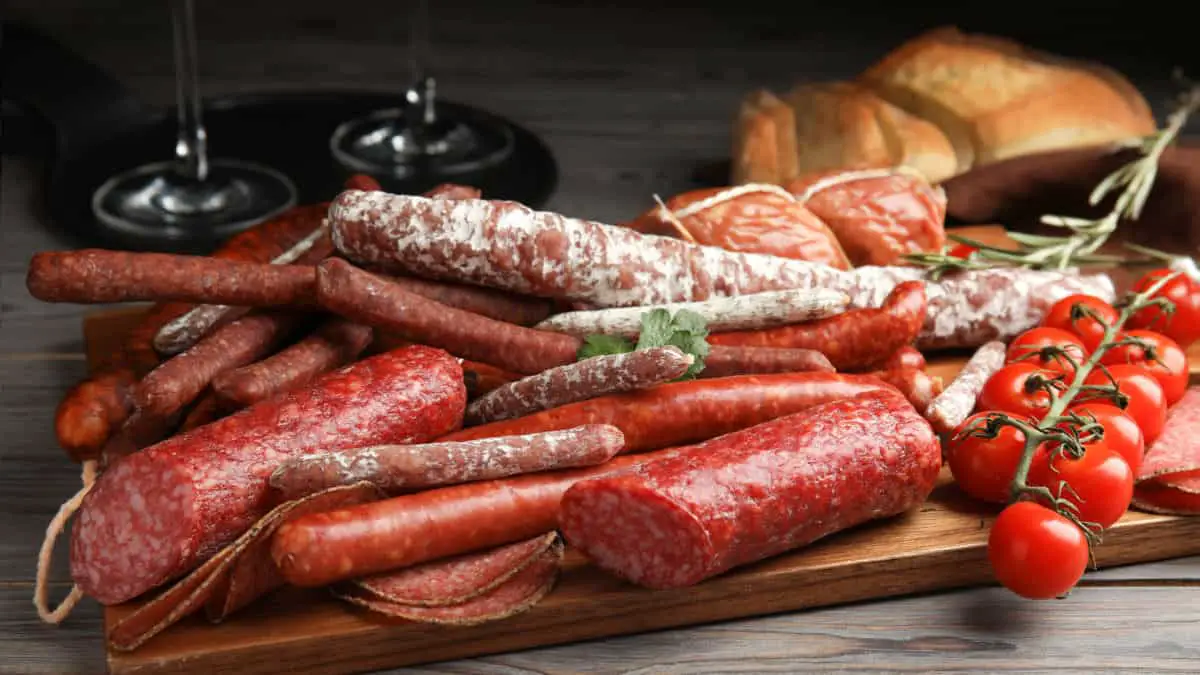
Cold Smoking sausage is not recommended for newbies as it can be extremely dangerous if it is not done correctly. However, everyone has to start somewhere, so I have come up with a how-to guide that will help you learn how cold smoke sausage safely.
0. Try Cold Smoking a Lower-Risk Food to Practice
This step comes before step one because it is what you should do before you get started with cold smoking sausage for the first time. Because cold smoking meats do not include hot temperatures to kill the potentially dangerous bacteria, doing it wrong could go quite poorly. Instead of jumping straight into high-risk foods, like salmon or sausage, try cold smoking some low-risk foods first.
Some low-risk foods you might try before trying sausage:
- Tofu
- Nuts
- Vegetables
- Hard-boiled eggs
- Garlic
Source
1. Consider Following a Recipe
If you have already tried your hand at cold smoking low-risk foods, then you are now ready to try cold smoking sausage. (Or maybe you haven’t tried low-risk foods but you want to dive in with sausage anyways). The next step for you to take is to find a recipe that sounds delicious to you.
Recipes from professional pitmasters or even just a recipe from a random website you found online will be a great help for your first-time cold smoking. Once you have tried a few different recipes and no longer feel like a beginner, then you can start to tweak things to your liking.
Trying to cold smoke sausage without a recipe could be harmful if you accidentally skip a step, or don’t allow the meats to cure long enough. Make sure to find a recipe that will take you through each step so your end result will be as fantastic as you hoped it would be.
You may also want to taste test different cold smoked sausages from restaurants or stores so that you can get an idea of what you want your sausage to taste like, and so you can find a recipe that will give you the desired result.
Some recipies you might consider trying:

2. Choose a High-Grade Sausage
After you have found a recipe you would like to try, the next step is to purchase your sausage. Though it may cost more money, choosing high-grade meat will reduce the chance of your sausage growing bacteria. Whether you are grinding your own mix or buying pre-ground meat, make sure it is of good quality and fresh.
The recipe you choose might call for a specific kind or brand of sausage, but here are some ideas of brands you could try:
| Type of Sausage | Brand | Average Cost |
|---|---|---|
| Chicken Sausage | Al Fresco All Natural Spinach & Feta Chicken Sausage | $5 for 4 sausages |
| Cheese Sausage | Niman Ranch Chipotle Cheddar Sausage | $7 for 4 sausages |
| Meatless Sausage | Tofurky Artisan Chick’n & Apple Sausage | $5.70 for 4 sausages |
| Bratwurst | Premio Bratwurst | $4 for 6 sausages |
| Italian Sausage | Premio Sweet Italian Sausage and Premio Hot Italian Sausage | $4 for 6 sausages |
3. Cure The Sausage
Why you should cure your sausage
Adding cure #1 or cure #2 to your meat is an important step that will protect your meat from bacteria growth while it is in the smoking process. (They are also called Prague Powder #1 and #2).
“Prague Powder #1 is the essential ingredient for making smoked sausage at home. This curing powder inhibits the growth of Clostridium botulinum which causes botulism, a potentially fatal form of food poisoning. Without this ingredient in a smoked sausage recipe you are putting your health at risk.”
Source
Botulism is an incredibly dangerous illness that can be received through contaminated foods. This toxin attacks the body’s nerves and is known to cause breathing difficulties, muscle paralysis, and potentially, death. This should be avoided at all costs. Follow your chosen recipe carefully when curing your sausage to stay as safe as possible.
Cure/Prague Powder #1 is made up 93.75% table salt and 6.25% sodium nitrate. Cure #1 is used only on meats that will be cooked later.
Cure/Prague Powder #2 is made up of sodium nitrate with a salt carrier. This cure is used only on meats that will be dry-cured. Think summer sausage or salami. This cure works much slower because the sodium nitrate is converted to sodium nitrite.
Depending on the type of sausage you plan on cold smoking, your curing process will differ. Just make sure to follow the recipe and don’t take any shortcuts. Eating meat that hasn’t been cured or cooked properly is just not worth the risk!
4. Choose a Wood
What type of wood you will want will really only depend on what flavor you want for your sausage. When it comes to the shape of the wood, pellets or chips are really the best choices for sausage. Chunks of wood will give off too much smoke. Because sausage is usually pretty thin it is easy to over smoke. Pellets and chips give very little smoke and will help avoid this.
Recommended Woods:
There really isn’t one perfect wood to use for smoking because each wood will give you a different flavor. It all depends on what you are trying to accomplish at the end of your smoke. Follow the recipe, but if you are branching out, here are some of the best woods for you to try:
| Best woods: | Why: |
|---|---|
| Hickory | This is the most popular type of smoking wood. It puts off a heavy, pungent, bacon-like smoke flavor. It’s most popular for smoking ham, bacon, pork roasts, sausages, big game steaks, and jerky. Its flavor is strong, so use it sparingly until you find the perfect ratio for you. |
| Apple | This is the second most popular wood smoke flavoring. The slightly sweet taste is ideal for smoked turkey, chicken, poultry, game birds, and even waterfowl. Because apple wood has the strongest flavor in the fruitwood category, it is also great for pork, ribs, sausage, and any game bird jerky. |
| Mesquite | This wood is now the third most popular BBQ and smoking flavor. Its strong flavor is a little sweeter and milder than hickory. It’s a top choice for pork, beef, lamb, poultry, big game, and jerky. Mesquite is a favorite for also smoking almonds, pecans, and other nuts. |
| Alder | Alder is a mild-flavored wood that is best for salmon, trout, and other fresh and saltwater fish. It has a light, delicate smoke flavor that enhances without overpowering the natural taste of the meat. It’s also great for pork, chicken, turkey, game birds, and waterfowl. |
| Cherry | This fruitwood is ideal for a sweet, full-bodied flavor for beef, big game, waterfowl, and jerky. It’s also a great choice for cold-smoked cheeses. |
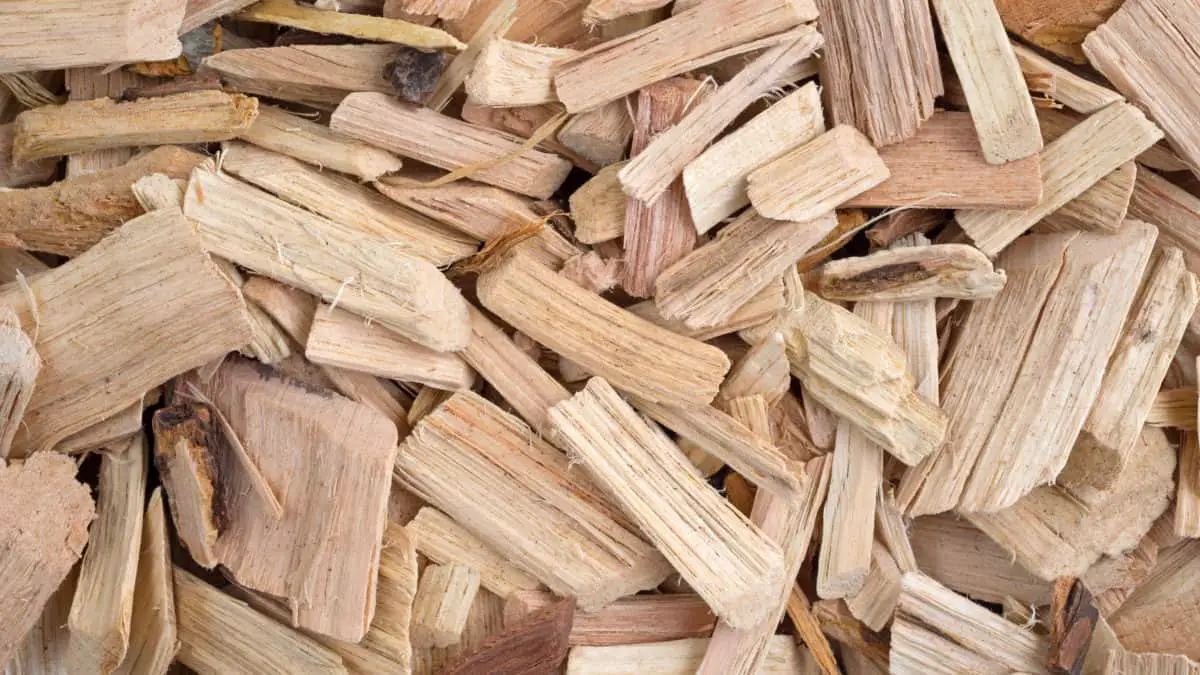
Which woods NOT to use:
Some woods are better than others, but some woods are just downright wrong for smoking. Here’s a list of woods that should never go in your smoker:
| Don’t use: | Why: |
|---|---|
| Conifer/Evergreen wood—pine, fir, spruce, redwood, cedar, sweetgum, and cypress | These woods are full of bitter resins that will ruin your meats and your smoker, and they can make you sick. |
| Wooden pallets | Since pallets are typically used in a storehouse/factory, they are often treated with chemicals or poison. |
| Scrap lumber, old furniture, or painted/stained wood | These are often painted with plastics or lead, are stained, and have poly coatings and poisonous chemicals. If you use them, they will mess up your flavors and likely make you ill. |
| Old woods covered in mold or fungus | Even if the wood is a smoking favorite, they are likely to give your meats a nasty flavor. |
| Wet wood | Wet wood will not semi-ignite and smolder as well as dry wood. It will burn unevenly if it is wet. |
Also avoid Elm, Eucalyptus, Sassafras, and Sycamore.
5. Gather Top-Notch Equipment
If you don’t already have a smoker, this is your last chance to get one. Without a good cold smoker, your sausage will never be edible.
There are many different kinds of smokers for you to choose from at a variety of prices, but make sure to do your research to find out what is best for you. Maybe you can’t afford or don’t have the space to store a large smoker, so you will need to buy something that attaches to your grill. Maybe you want to get a cheap one to start since you are a beginner, or maybe you want to buy an expensive smoker right out of the gate.
Here are a few cold smokers and attachments you might consider buying:
- Lanney Smoker Tube– inexpensive, small, and will attach to your grill.
- A-MAZE-N Maze Pellet Smoker Tray– designed to allow you to smoke up to 12 hours
- Masterbuit Slow Smoker Add-On– converts an electric smoker into a cold smoker
- Smoke Daddy Big Kahuna Cold Smoke Generator– attaches to your grill to allow you to hot or cold smoke
- Cookshack PG500 Fast Eddy’s Pellet Grill and Smoker– full smoker setup
6. PreHeat Smoker
Before putting the sausage in the smoker, you’ll need to preheat it and get the smoke started. For cold smoking, the internal temperature of the smoker should not get above 110 degrees Fahrenheit. Setting the temperature at 80 degrees is a good option.
To avoid over-smoking your sausage, you should use pellets or chips instead of chunks of wood. Put a cup of wood in the chip pen or in a pellet tube if that’s what you are using. Close the lid and let a good smoke get started. After about 5 minutes open the lid and let all the smokiness clear.
As always, follow the recipe as exactly as you can since you are first starting. Once you have practiced and done more research, you can stray from the path. But until then, follow the recipe to a T to avoid unwanted results.
7. Smoke Sausage
When cold smoking sausage, you don’t want to actually cook the sausage. Rather, you are just giving the sausage a smoky flavor. When it comes time to put the sausage in the smoker, it really doesn’t need to be in there for that long. 2 -3 hours is a good start and if you decide you like a more intense smoke flavor, you can bump up the time next time you smoke sausage.
To make sure the smoke flavor is distributed evenly through the meat, it’s best to hang the sausage vertically by its casing. This allows the smoke to travel around the entire sausage instead of only touching one side. You may need to purchase additional equipment, such as hanging racks, to make sure your sausage will be in the optimal position.
As always, and I cannot stress this enough, follow the recipe. Cold smoking meats can go very wrong very fast. As a beginner, you probably do not have the full knowledge on how to mess around and safely try new things. So, until you really understand the cold smoking process, follow your chosen recipe exactly.
8. Storing Sausage
After it has been smoked, you should store the sausage in an air-tight container in the fridge or freezer, depending on how soon you’ll cook and eat it. If you plan to cook it within the next few days, you can keep it in the fridge. Any later than that and the sausage should be kept in the freezer, to avoid bacteria growth.
Bacteria love oxygen, food, warm temperatures, and moisture. They already have plenty of food (aka, your sausage), so you need to limit access to air, warm temperatures, and moisture to prevent the bacteria from spreading like wildfire. As said before, an air-tight container stored at cold temperatures is the best way to stunt bacteria growth.
9. Eating and Serving Sausage
And last, but not least, the last step is eating your meal.
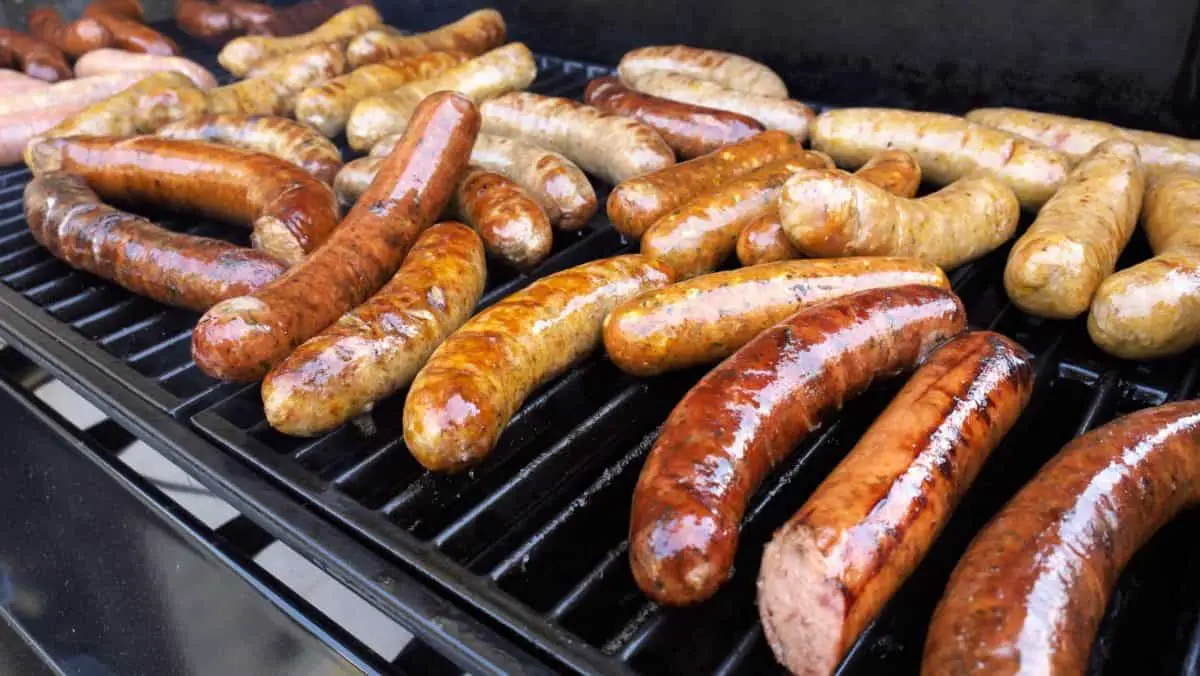
However, do not eat the sausage without cooking it first! However you decide to cook the sausage, it needs to reach an internal heat of 140 degrees Fahrenheit. This will kill any bacteria that is still living in the sausage.
After your meat is cooked, you are all set to enjoy your tasty cold smoked meal. The best step is always eating!
